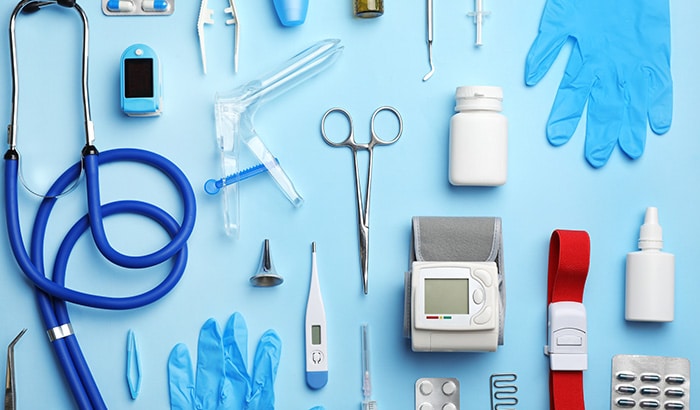
Consumable medical supplies are indispensable in the healthcare sector, serving as the backbone for various medical procedures, patient care, and overall hospital operations. These supplies are used on a daily basis and are designed for single-use or limited use, making them essential for maintaining hygiene, preventing infections, and ensuring efficient medical practices.
What Are Consumable Medical Supplies?
Consumable medical supplies are items that are used once or a few times before being disposed of. Unlike durable medical equipment, these supplies are not meant to last for an extended period. They include a wide range of products, such as:
-
Personal Protective Equipment (PPE): Gloves, masks, gowns, and face shields.
-
Wound Care Products: Bandages, gauze, adhesive tapes, and dressings.
-
Diagnostic Supplies: Test strips, specimen containers, and swabs.
-
Surgical Supplies: Drapes, scalpels, and sutures.
-
Patient Care Items: Catheters, syringes, and IV sets.
These supplies are crucial for performing medical procedures, ensuring patient safety, and maintaining sanitary conditions in healthcare facilities.
Importance of Consumable Medical Supplies in Healthcare
1. Infection Control
One of the primary roles of consumable medical supplies is to prevent the spread of infections. Items like gloves, masks, and hand sanitizers create a barrier against pathogens, protecting both healthcare workers and patients. Single-use supplies ensure that cross-contamination risks are minimized.
2. Efficient Medical Procedures
Consumable supplies streamline medical processes. For instance, pre-sterilized surgical kits eliminate the need for extensive preparation, allowing medical staff to focus on patient care. This efficiency is vital in emergency situations where time is critical.
3. Patient Safety
The use of sterile and disposable medical supplies significantly reduces the risk of healthcare-associated infections (HAIs). Items like syringes and catheters, when used properly, ensure that patients are not exposed to unnecessary health risks.
4. Cost-Effectiveness
While consumable supplies might seem like a recurring expense, their role in preventing infections and complications actually lowers long-term healthcare costs. Preventing HAIs can save significant amounts of money for hospitals and patients alike.
Categories of Consumable Medical Supplies
1. PPE (Personal Protective Equipment)
-
Masks: Surgical masks and N95 respirators for respiratory protection.
-
Gloves: Latex, nitrile, and vinyl gloves for hand protection.
-
Gowns and Aprons: For body protection during medical procedures.
2. Wound Care Supplies
-
Dressings and Bandages: To protect wounds and promote healing.
-
Gauze and Cotton Balls: For cleaning and covering wounds.
-
Adhesive Tapes: To secure dressings in place.
3. Diagnostic Supplies
-
Test Kits: For blood sugar, pregnancy, and other diagnostic tests.
-
Specimen Containers: For collecting and transporting biological samples.
-
Swabs: For taking samples from patients for laboratory analysis.
4. Surgical Supplies
-
Scalpels and Blades: Essential tools for surgeries.
-
Sutures: For closing wounds or surgical incisions.
-
Surgical Drapes: To maintain a sterile field.
5. Patient Care Supplies
-
Catheters and Tubes: For draining or administering fluids.
-
Syringes and Needles: For administering medications or drawing blood.
-
IV Sets: For delivering fluids and medications intravenously.
Challenges in Managing Consumable Medical Supplies
1. Supply Chain Issues
The availability of consumable medical supplies can be affected by supply chain disruptions. This was evident during the COVID-19 pandemic when there was a global shortage of PPE and other critical items.
2. Waste Management
The disposable nature of these supplies creates a significant amount of medical waste. Proper disposal and recycling practices are necessary to minimize environmental impact.
3. Cost Management
While essential, the recurring costs of consumable supplies can strain the budgets of healthcare facilities. Efficient inventory management and bulk purchasing can help mitigate these costs.
Innovations in Consumable Medical Supplies
1. Biodegradable Materials
To address environmental concerns, manufacturers are developing consumable medical supplies made from biodegradable materials. These buy original health & beauty products online decompose naturally, reducing medical waste.
2. Smart Supplies
Technological advancements have led to the creation of smart consumable supplies, such as sensor-enabled bandages that monitor wound healing or IV sets with built-in flow regulators.
3. Sustainable Packaging
Eco-friendly packaging solutions are being adopted to reduce the environmental footprint of consumable medical supplies.
Best Practices for Managing Consumable Medical Supplies
1. Inventory Management
Implementing a robust inventory management system ensures that supplies are always available when needed, reducing the risk of shortages.
2. Training Staff
Healthcare staff should be trained on the proper use and disposal of consumable supplies to maximize efficiency and minimize waste.
3. Supplier Relationships
Building strong relationships with reliable suppliers ensures a steady supply of high-quality consumable items.
The Future of Consumable Medical Supplies
The demand for consumable medical supplies is expected to grow as the global population ages and healthcare needs increase. Innovations in materials and manufacturing processes will likely lead to more sustainable and cost-effective solutions. Additionally, the integration of technology into these supplies will enhance their functionality and efficiency.
Conclusion
Consumable medical supplies are a cornerstone of modern healthcare. They play a critical role in infection control, patient safety, and the overall efficiency of medical practices. By addressing challenges such as waste management and supply chain disruptions, and by embracing innovations, the healthcare industry can ensure the continued availability and effectiveness of these essential items. Investing in the proper management and sustainable practices for consumable medical supplies will benefit both healthcare providers and patients, creating a safer and more efficient healthcare system.





Leave a Reply